 Taste of Home
Taste of Home
Garlic-Butter Steak
This quick-and-easy skillet entree is definitely restaurant-quality and sure to become a staple at your house, too! —Lily Julow, Lawrenceville, Georgia Go to Recipe When you do want to eat out, check out the best steakhouse in every state.
Wedge Salad with Blue Cheese Dressing
A wedge salad gets the creamy treatment when topped with blue cheese dressing. Keep the dressing as a topper, or make it a dip for Buffalo wings. —Jenn Smith, East Providence, Rhode Island

Cast-Iron Skillet Steak
If you've never cooked steak at home before, it can be a little intimidating. That's why I came up with this simple steak recipe that's so easy, you could make it any day of the week. —James Schend, Taste of Home Deputy Editor
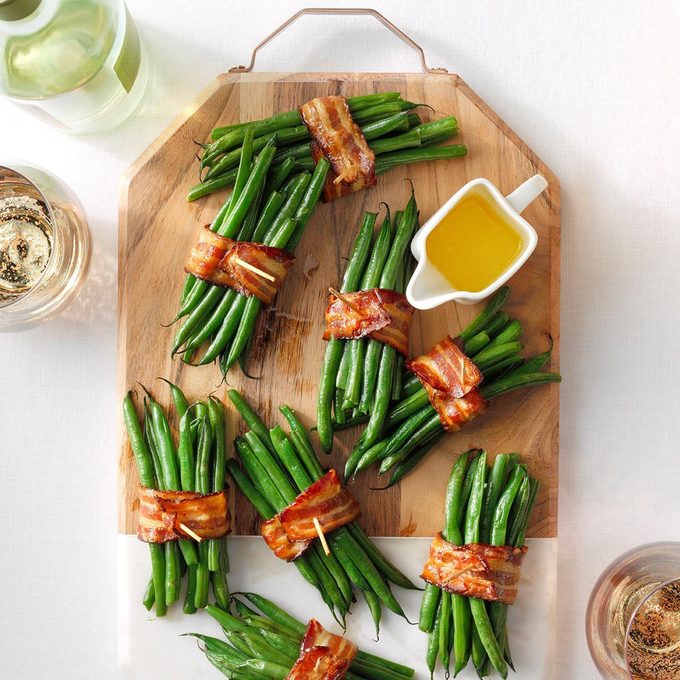
Green Bean Bundles
I found this recipe in a rural newspaper years ago and have made it often. The bean bundles are excellent with chicken or beef. Sometimes I'll arrange them around a mound of wild rice to make an appetizing side dish. —Virginia Stadler, Nokesville, Virginia
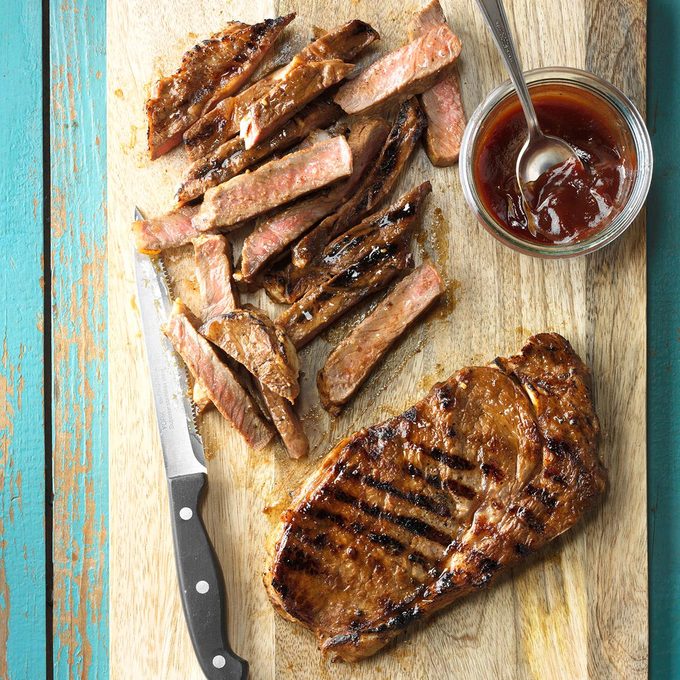
Grilled Marinated Ribeyes
These juicy steaks are a favorite meal of ours when we go camping. Let them sit in tangy, barbecue-inspired marinade overnight and you've got a rich and hearty dinner ready to grill up the next day. —Louise Graybiel, Toronto, Ontario
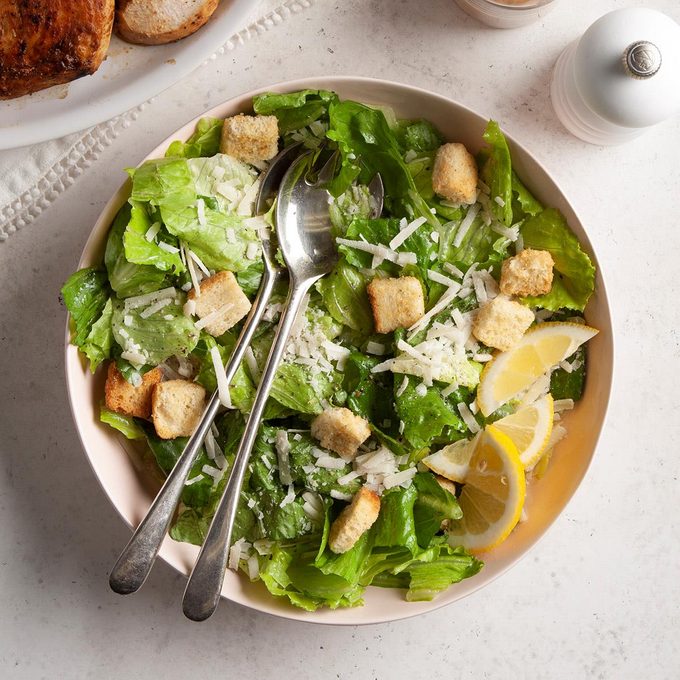
Caesar Salad
This crunchy, refreshing Caesar salad has a zippy, zesty dressing that provides a burst of flavor with each bite. It's a great salad to perk up any spring or summer meal. —Schelby Thompson, Camden Wyoming, Delaware

Traditional Cheesecake
Here's a delicious classic cheesecake that tastes great alone or with any number of garnishes. Use this basic recipe as a palette for your creativity!
Steak Diane
When I want to provide a memorable dinner but don't want to spend hours in the kitchen, this is the recipe I rely on. I've used it many times on holidays or other occasions for a quick, impressive main dish. We relish the savory steak Diane sauce. —Pheobe Carre, Mullica Hill, New Jersey
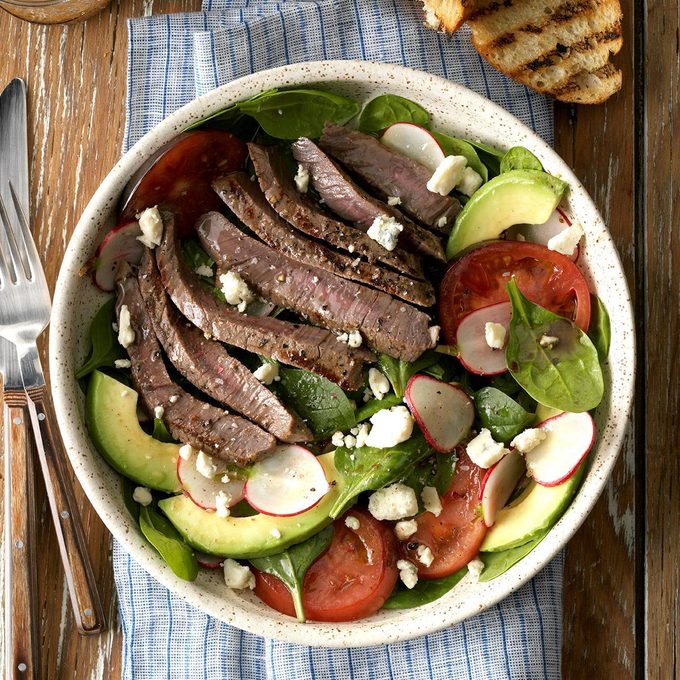
Flat Iron Steak Salad
My steak salad with avocado and radishes is a big plate of summer deliciousness. I sometimes add dried cranberries and cherry tomatoes, but you can customize it to suit your tastes. —Marla Clark, Albuquerque, New Mexico

Seasoned Oven Fries
The next time you're craving fries, opt for these speedy, health-conscious wedges that bake in the oven. They're just as tasty as deep-fried versions and made with less mess. —Pat Fredericks, Oak Creek, Wisconsin

Skillet Sea Scallops
You'll want to slip this recipe into the front of your last-minute guests file. Pasta and mixed greens nicely complement the tender, citrusy shellfish. —Margaret E. Lowenberg, Kingman, Arizona
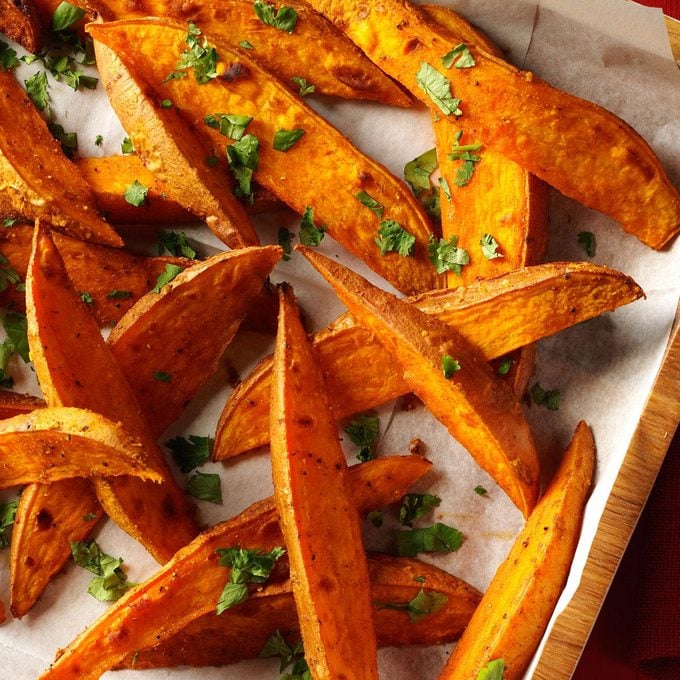
Curried Sweet Potato Wedges
Sweet potatoes roasted with curry and smoked paprika delight everybody at our table. The mango chutney makes a tangy dip. —Simi Jois, Streamwood, Illinois
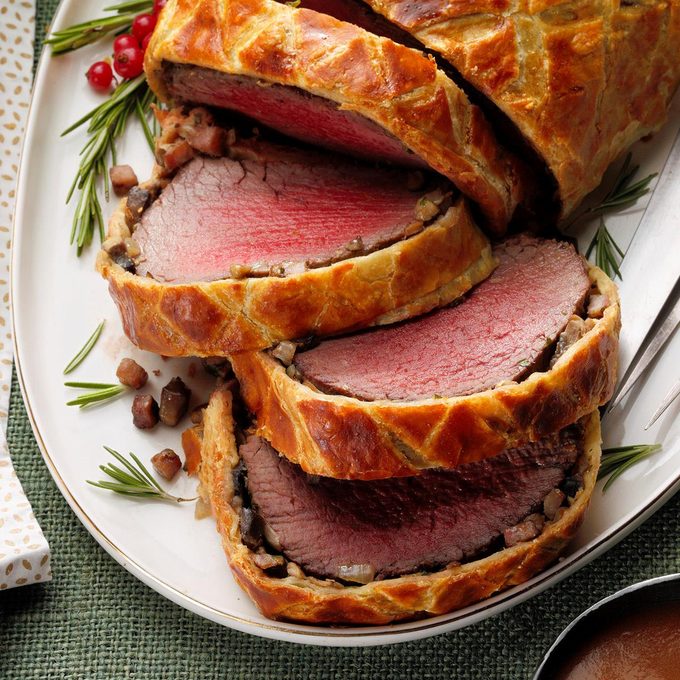
Beef Wellington with Madeira Sauce
This very impressive-looking yet easy-to-make dish can be made ahead. Just finish the baking process when your guests arrive. —Janaan Cunningham
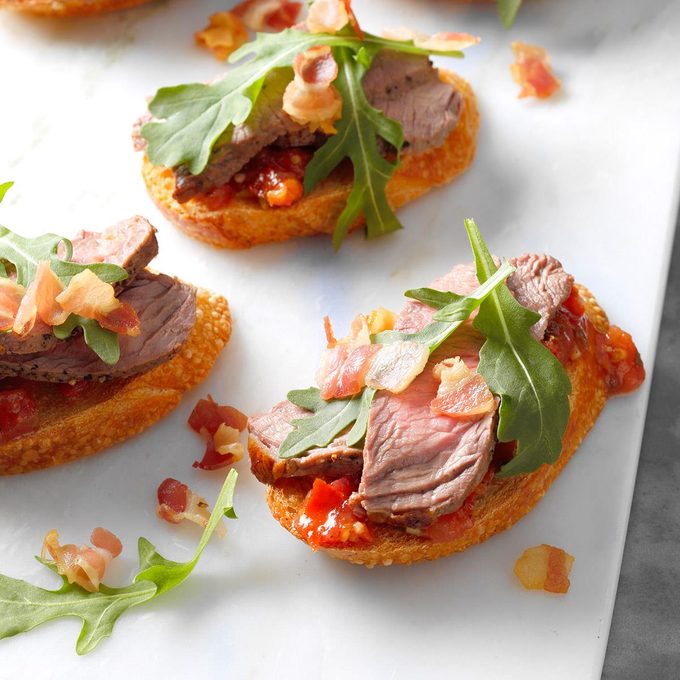
Italian Steak Bruschetta
This recipe combines my favorite things to eat: toast, steak, bruschetta topping and delicious pancetta. It's looks so pretty on the plate! This five-ingredient appetizer is easy to prepare but will have everyone thinking you spent a long time in the kitchen. —Devon Delaney, Westport, Connecticut
Green Beans Amandine
It's hard to improve on the taste Mother Nature gives to fresh green beans, but Mom has done just that for years using this green beans amandine recipe. I have always thought the crunchy almonds were a super addition. —Brenda DuFresne, Midland, Michigan
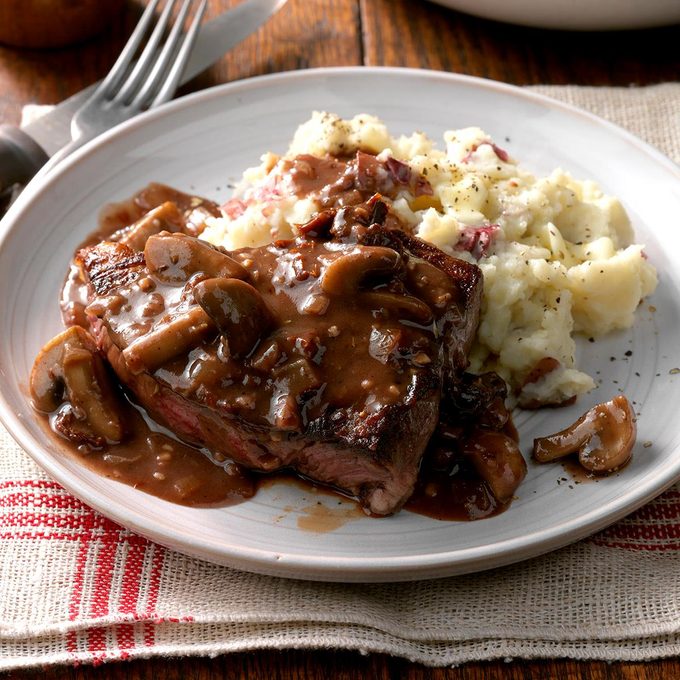
Steaks with Mushroom Sauce
These rich steaks are smothered in a rich mushroom-wine sauce to create a wonderfully savory entree. The tender steaks are sure to be a hit, and would certainly dress up any plate. —Stephanie Allee, Chambersburg, Pennsylvania
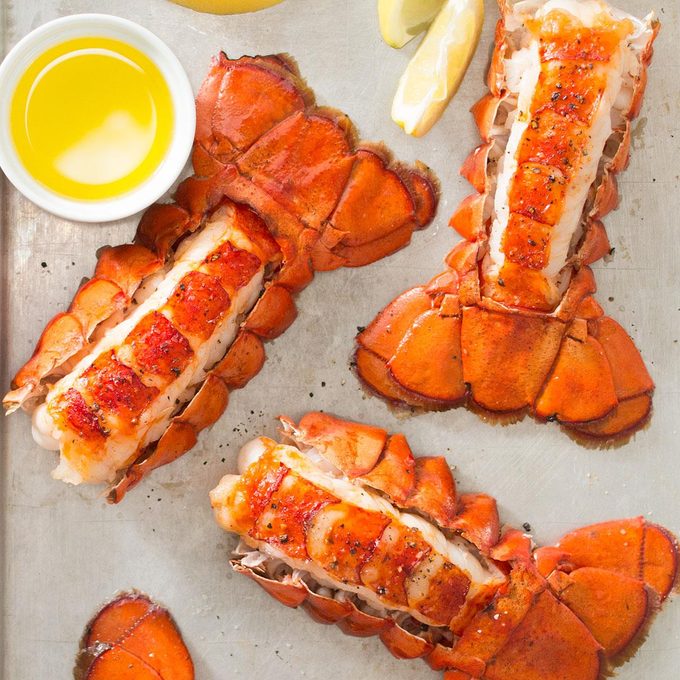
Broiled Lobster Tail
No matter where you live, these succulent, buttery lobster tails are just a few minutes away. Here in Iowa, we use frozen lobster with delicious results, but if you're near the ocean, by all means use fresh! —Lauren McAnelly, Des Moines, Iowa
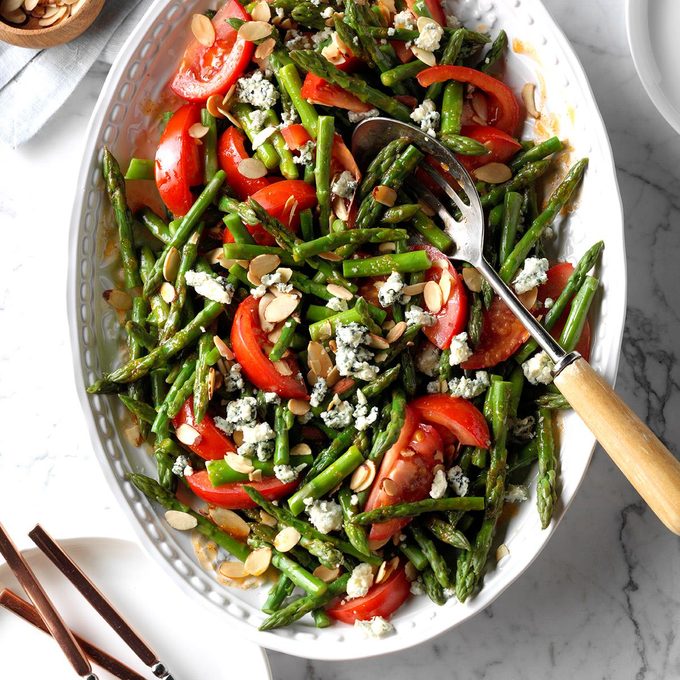
Spring Asparagus
This fresh and colorful side dish is delicious served warm or cold. I get lots of compliments on the homemade dressing. —Millie Vickery, Lena, Illinois
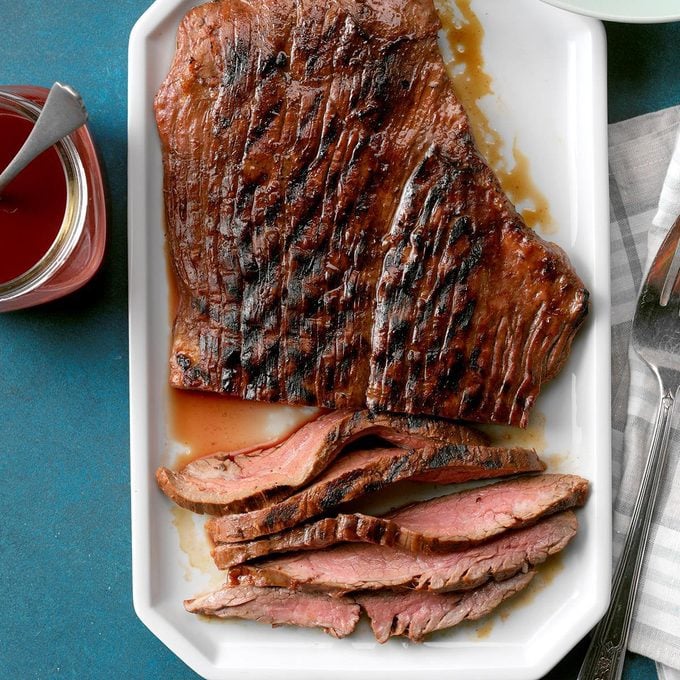
Easy Marinated Grilled Flank Steak
Friends shared this three-ingredient marinade years ago, and it's been a favorite since. Serve this steak with salad and grilled potatoes for a quick meal. —Beverly Dietz, Surprise, Arizona
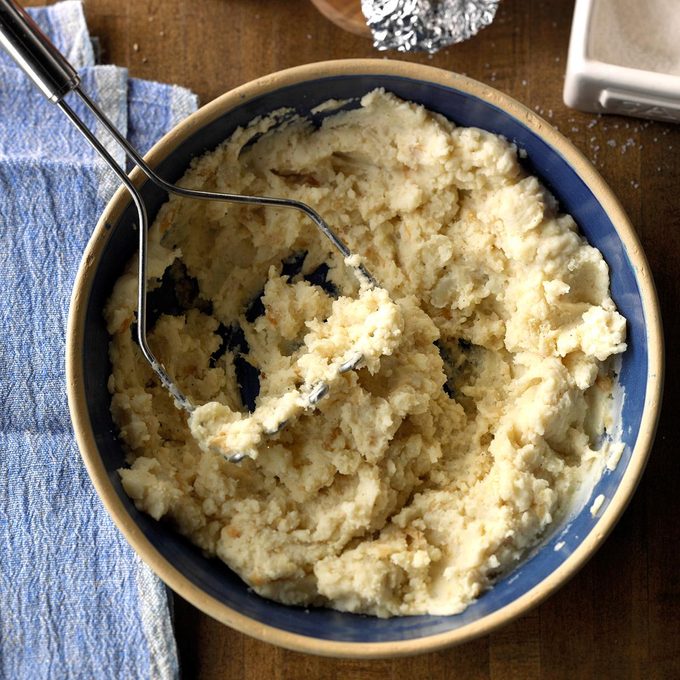
Texas Garlic Mashed Potatoes
These creamy potatoes get their flavor burst from garlic and caramelized onions. Their savory goodness makes any meal better. —Richard Markle, Midlothian, Texas
Restaurant-Style Prime Rib
I have served this recipe to people visiting the U.S. from all over the world and to dear friends, family and neighbors. It is enjoyed and raved about by all. It makes an excellent main dish for a Christmas feast. —Kelly Williams, Forked River, New Jersey

Steak and Fries Salad
This is a very popular dish at restaurants in central Pennsylvania. Prepared sweet-and-sour dressing is good on this salad, too. —Nancy Collins, Clearfield, Pennsylvania
Chocolate Truffle Cheesecake
If you delight in the taste of chocolate, then this is the cheesecake for you. Every creamy bite melts in your mouth. It's so impressive yet not difficult to prepare-I whip up this dessert each time I want a yummy treat for my family, friends or co-workers. —Mary Jones, Cumberland, Maine
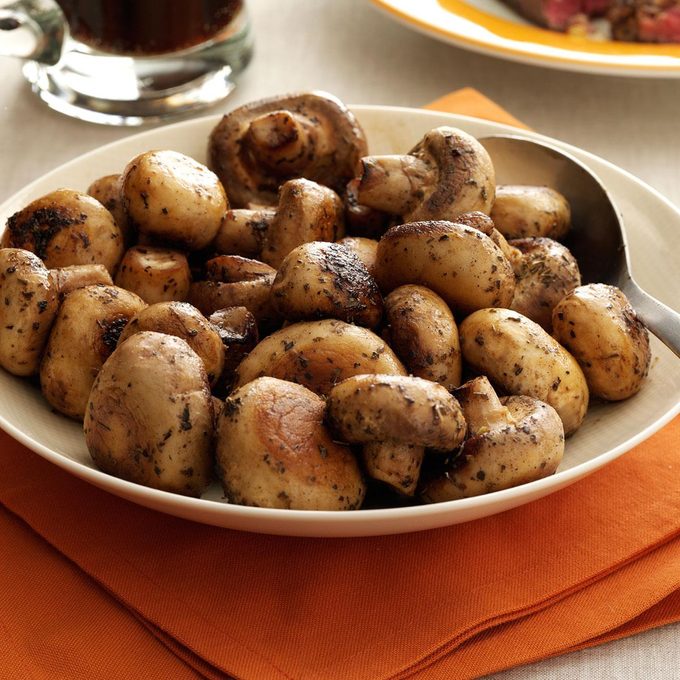
Steakhouse Mushrooms
I got this recipe from a friend back when we were in nursing school. Whenever my husband is cooking meat on the grill, you can bet I'll be in the kitchen preparing these mushrooms. —Kenda Burgett, Rattan, Oklahoma
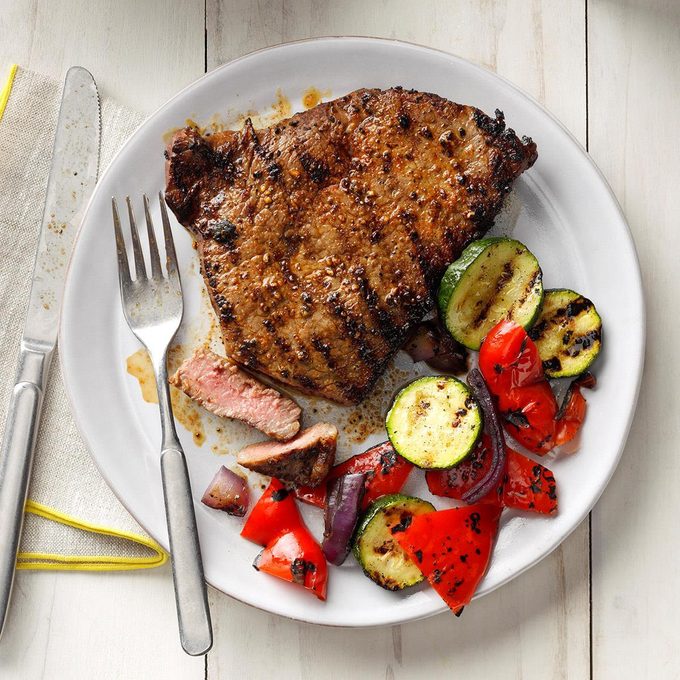
Grilled Peppered Steaks
I once wanted a peppered steak for supper, so I tossed some spices together and came up with this recipe. My family thoroughly enjoyed it.—Stephanie Moon, Boise, Idaho.

Simple Au Gratin Potatoes
These homemade au gratin potatoes are always welcome at our dinner table, and they're so simple to make. A perfect complement to ham, this homey potato gratin also goes well with pork, chicken and other entrees. —Cris O'Brien, Virginia Beach, Virginia
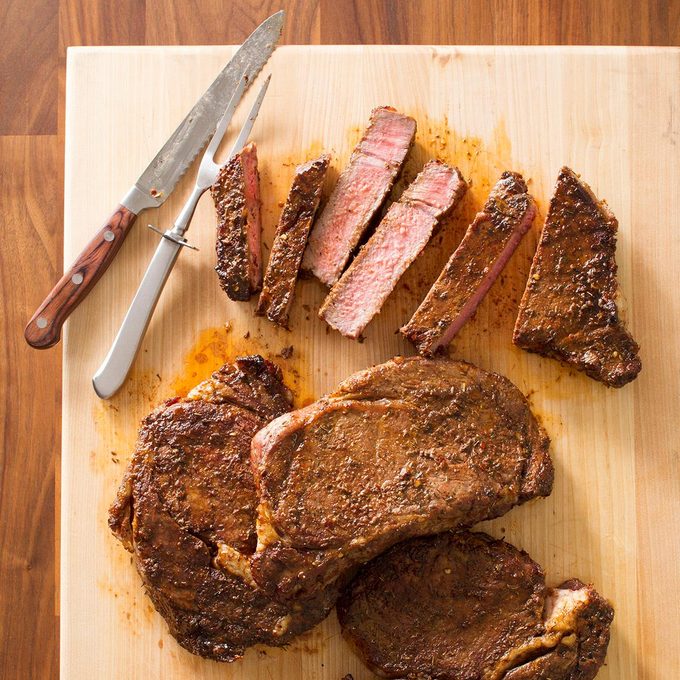
Peppered Ribeye Steaks
A true Southerner to the core, I love to cook—especially on the grill. This recipe is one of my favorites! The seasoning rub makes a wonderful marinade, and nothing beats the summertime taste of these flavorful grilled steaks! —Sharon Bickett, Chester, South Carolina
Broccoli Cheddar Soup
My husband Eric and I eat dinner together to spend some quality time together. This cheesy broccoli cheddar soup is proof that soup doesn't need to be made in big batches to be good. —Cheryl McRae, West Valley, Utah
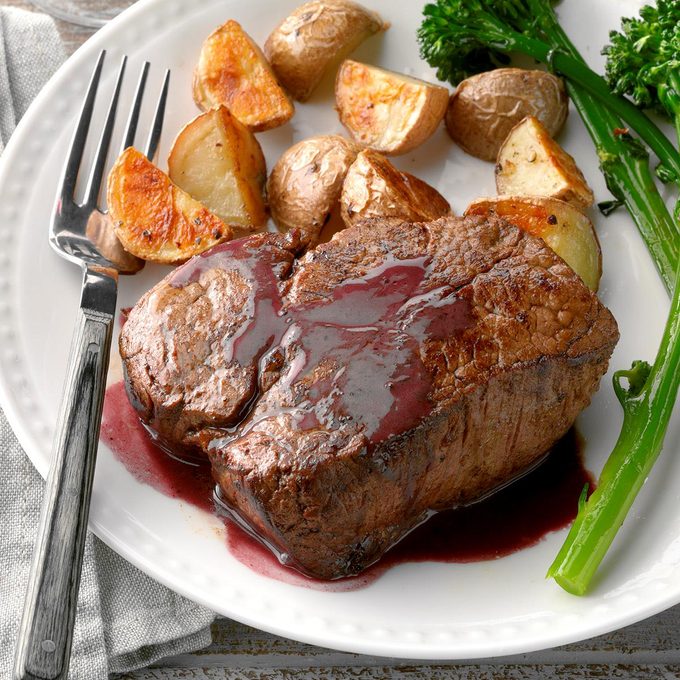
Merlot Filet Mignon
Although this is a simple recipe, the filet is rich and elegant enough for a special occasion. Add a salad and rolls, and dinner is done! —Jauneen Hosking, Waterford, Wisconsin
Lemon Shrimp with Parmesan Rice
I grew up in Biloxi, Mississippi, where rice, garlic and seafood are staples of Gulf Coast cuisine. This easy shrimp and rice dish is a longtime family favorite that's ready in minutes. —Amie Overby, Reno, Nevada
Steak with Chipotle-Lime Chimichurri
Steak gets a flavor kick from chimichurri. This piquant, all-purpose herb sauce is so versatile, it complements most any grilled meat, poultry or fish. —Laureen Pittman, Riverside, California
Brussels Sprouts with Bacon & Garlic
When we have company, these sprouts are my go-to side dish because they look and taste fantastic. Fancy them up a notch with pancetta instead of bacon. —Mandy Rivers, Lexington, South Carolina

Pineapple Carrot Cake
This moist cake with cream cheese frosting is the best I've ever eaten. It's so simple, too, because it uses two jars of baby food instead of fresh carrots that need to be grated. —Jeanette McKenna, Vero Beach, Florida
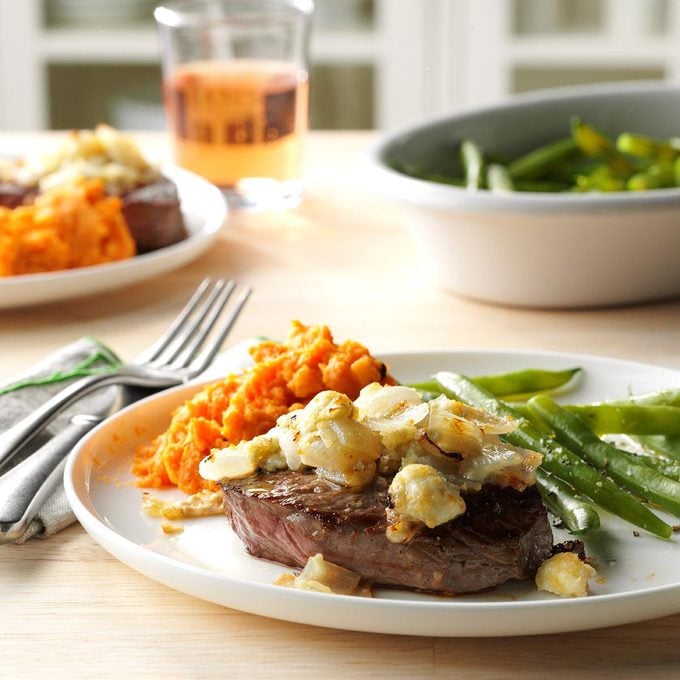
Blue Cheese-Crusted Sirloin Steaks
My wife adores this steak—and me when I fix it for her. She thinks it's the ideal dish for Friday night after a long workweek. —Michael Rouse, Minot, North Dakota
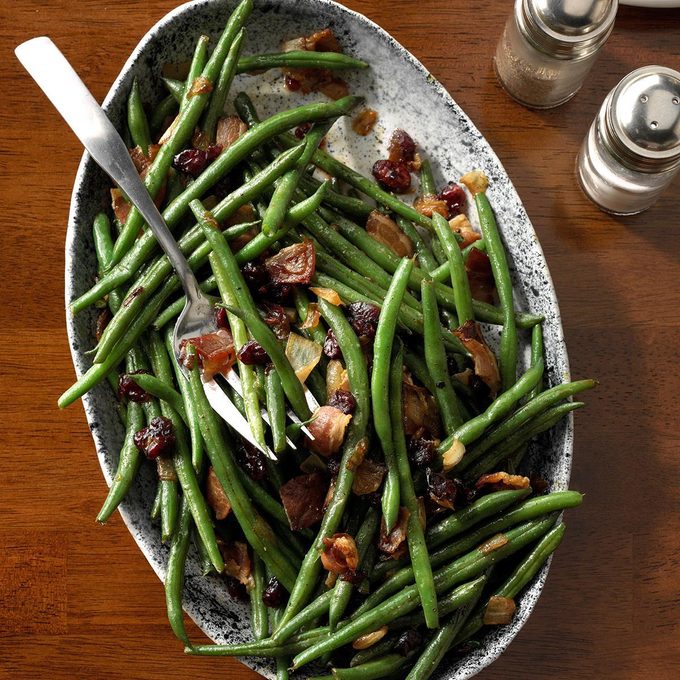
Maple-Glazed Green Beans
After I picked my first green beans one year, I wanted to make a savory dish that was unique, quick and packed with flavor. I loved this so much I couldn't stop eating it. The next day I picked more beans and made this delicious side dish again. —Merry Graham, Newhall, California

Classic French Onion Soup
Enjoy my signature French onion soup the way my granddaughter Becky does: I make onion soup for her in a crock bowl, complete with garlic croutons and gobs of melted Swiss cheese on top. —Lou Sansevero, Ferron, Utah

Crispy Fried Onion Rings
I use this onion rings recipe as a burger topper to add an extra element to already-fantastic burgers. These onion rings are also perfect for giving your salads a little crunch. —Taste of Home Test Kitchen, Milwaukee, Wisconsin
Parmesan Asparagus
Nothing could be more simple than this side dish. Since it has just four ingredients, I assemble it in no time, then pop it into the oven for about 15 minutes. It turns out perfect every time. —Mary Ann Marino, West Pittsburgh, Pennsylvania
Grilled Ribeye with Garlic Blue Cheese Mustard Sauce
This simple steak gets a big flavor boost from two of my favorites: mustard and blue cheese. My husband and I make this recipe to celebrate our anniversary each year! —Ashley Lecker, Green Bay, Wisconsin
Bacon-Gruyere Smashed Potatoes
Gruyere cheese, bacon, sweet onions and herbs take smashed potatoes to a whole new level of amazing. This loaded side dish is so rich and satisfying, it could almost be eaten on its own! — Lisa Speer, Palm Beach, Florida

Beef Filets with Portobello Sauce
These tasty steaks seem special, but they are fast enough for an everyday dinner. We enjoy the mushroom-topped filets with crusty French bread, a mixed salad and a light lemon dessert. —Christel Stein, Tampa, Florida
Classic Crab Cakes
Our region is known for good seafood, and crab cakes are a traditional favorite. I learned to make them from a chef in a restaurant where they were a bestseller. The crabmeat's sweet and mild flavor is sparked by the blend of other ingredients. —Debbie Terenzini, Lusby, Maryland
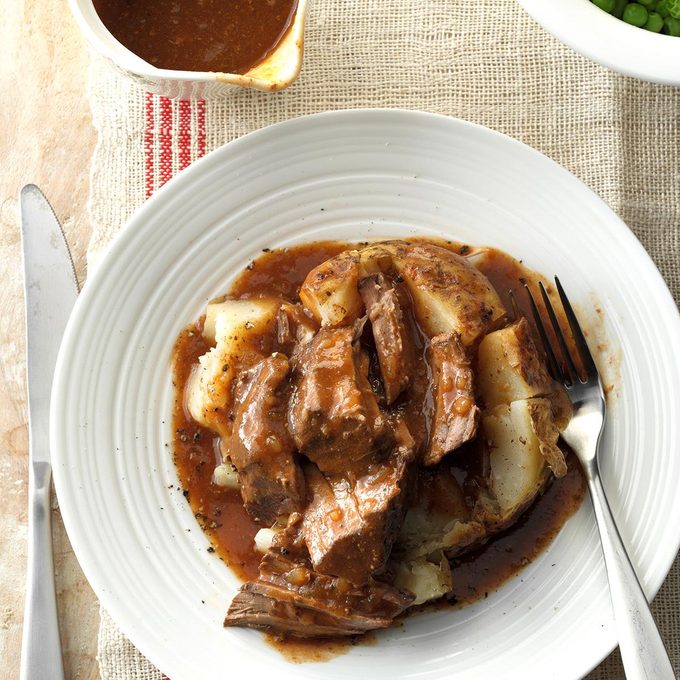
Round Steak Italiano
My mom used to make this wonderful dish, and I've always enjoyed it. The gravy is especially dense and flavorful.—Deanne Stephens, McMinnville, Oregon
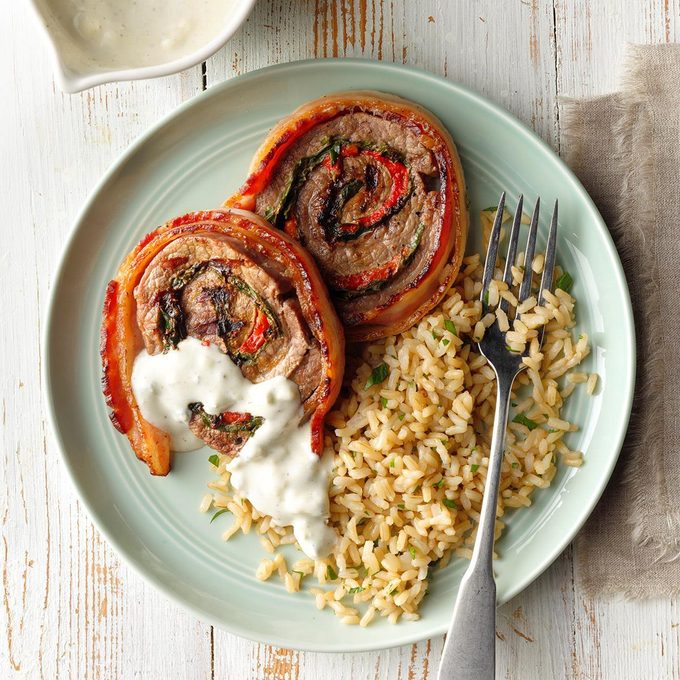
Flank Steak Pinwheels
The secret to these pretty flank steak pinwheels lies in their butterfly treatment. Because the steaks are flattened, marinade isn't need. Instead, they're filled with a colorful stuffing of red pepper and spinach and draped with a flavorful, homemade blue cheese sauce. —Taste of Home Test Kitchen
Pretty Duchess Potatoes
Comfort-food flavor comes in attractive packages that are just the right size! This recipe is a favorite Christmas dinner or Thanksgiving menu idea. —Taste of Home Test Kitchen
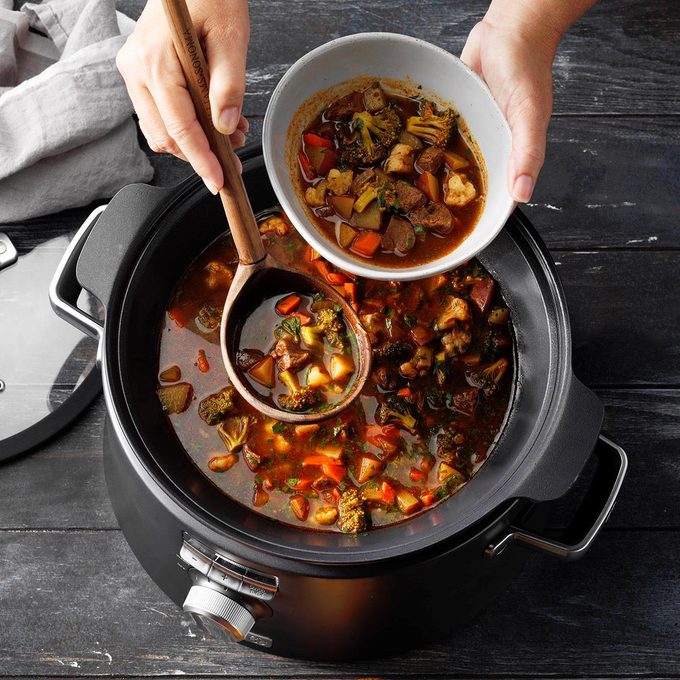
Steakhouse Soup
Enjoy a steak dinner in a bowl with this super simple, hearty steak soup. Because of the chili powder and cayenne pepper, it packs a little heat, but the recipe can easily be adjusted if you're cooking for young ones. —Erica Schmidt, Kansas City, Kansas
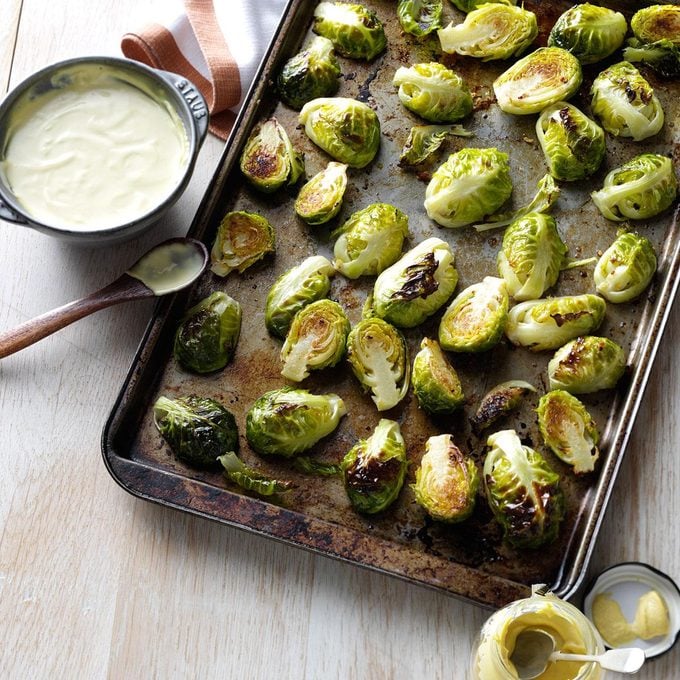
Garlic-Roasted Brussels Sprouts with Mustard Sauce
Don't be afraid to bring out the roasted Brussels sprouts. Mellowed with mustard sauce, they may just delight even the most skeptical folks. —Becky Walch, Orland, California
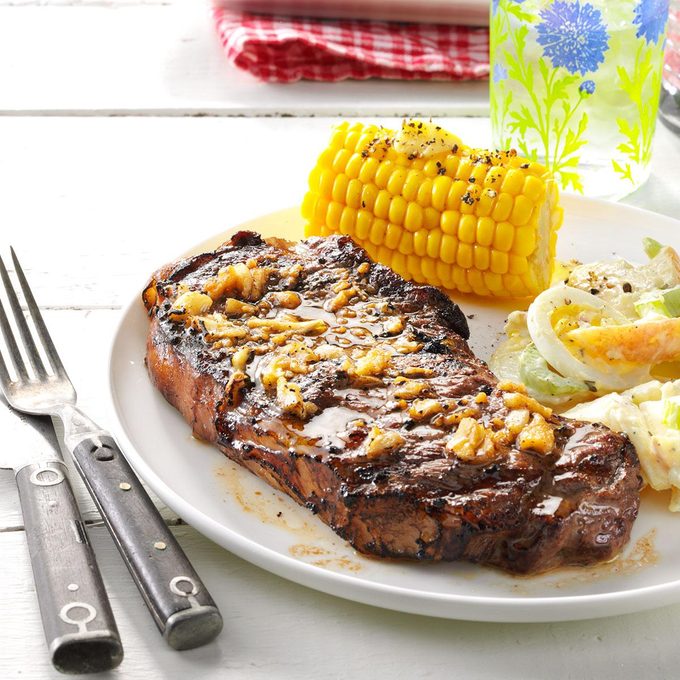
Garlic Grilled Steaks
Take steak to new flavor heights by basting your choice of cuts with an amazing garlicky blend that requires only a few minutes to fix. It will be a mouthwatering change of taste at your next outdoor gathering. —Taste of Home Test Kitchen
Strawberry-Blue Cheese Steak Salad
At lunch one day, a friend told me about a steak salad she'd had at a party. It sounded so fantastic I had to try it for myself. My family would eat it nonstop if we could. Can't seem to get enough of that tangy dressing! —Alma Winberry, Great Falls, Montana
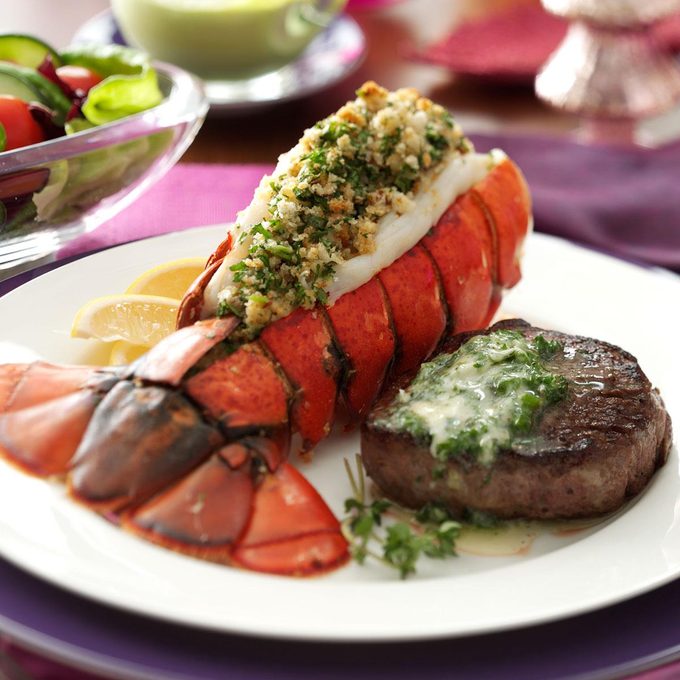
Surf & Turf
For an intimate dinner with close friends, serve this stunning dinner of tenderloin steaks and lobster tail. Your guests will think they are dining at a fine restaurant when you serve them this surf and turf dish. —Taste of Home Test Kitchen



































0 Response to "Aged Beef Dry Aged Beef Mold"
Post a Comment